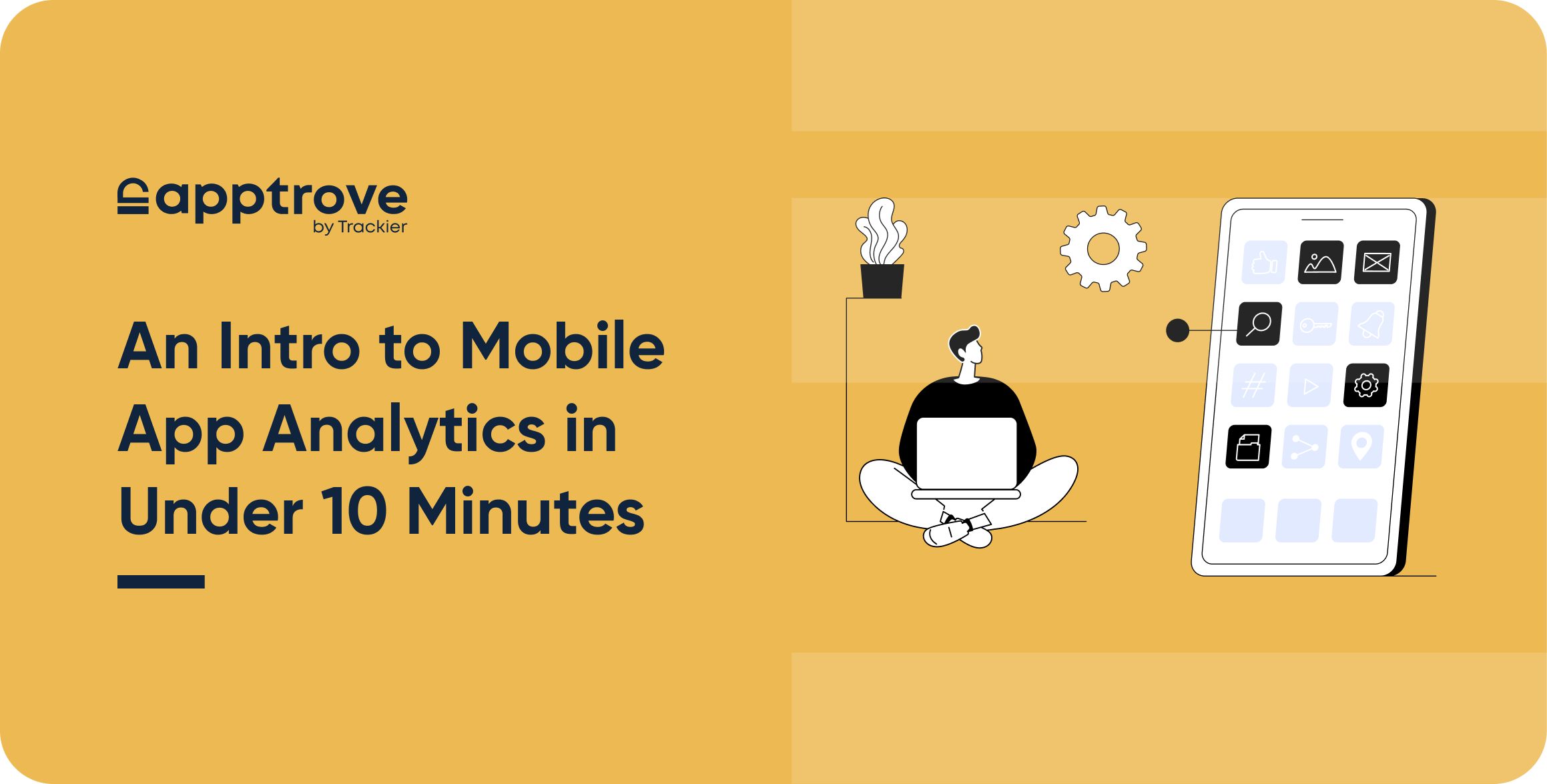Do you know what separates successful mobile apps from the rest of the pack? It’s not just great design or innovative features. It’s the ability to gather, analyze, and act on data. Mobile app analytics is the key to unlocking insights about your users and how they interact with your app. With analytics, you can identify trends, track user behavior, and make informed decisions to improve user experience and drive growth. In this blog post, we’ll dive into the world of mobile app analytics and explore how it can help you optimize your app for success. So strap in and get ready to discover the power of data-driven decision-making in mobile app development!
What is Mobile App Analytics?
Mobile app analytics is the process of collecting data on the number of visitors on your app, their behavior, and user personas. It helps in having a deep analysis of the performance of your app, and user metrics, and improving your app conversions.
Mobile app analytics tools gather data based on different behaviors on the app like user acquisition, engagement, retention, etc. To analyze the credibility of the app there are different mobile app metrics or KPIs. Based on the KPIs like demographics, retention rate, session length, engagement, etc, businesses can add more value to them.
Understanding Mobile App Analytics
Mobile app analytics tools gather data based on various KPIs and parameters, like user acquisition, engagement, retention, etc.
To analyze the credibility of the app there are different mobile app metrics or KPIs. Based on the KPIs like demographics, retention rate, session length, engagement, etc, businesses can add more value to them.
The mobile app metrics provide businesses with insights about how their app is being used, user interactions, or engagement so that they can improve their performance and user experience.
It provides various types of data, including user engagement, retention, acquisition, demographics, device type, location, and more. The data is collected through various tools such as mobile app analytics platforms, mobile app tracking, and user feedback. By monitoring and analyzing user behavior, app owners can identify pain points, optimize user experience, and improve user retention.
Mobile app analytics also helps businesses measure the success of their app marketing campaigns. They can also track the effectiveness of their app store optimization (ASO), social media campaigns, and other promotional activities for better business strategies.
Key Features of Mobile App Analytics
Mobile app analytics can provide developers with a wealth of insights into user behavior, preferences, and interactions with their apps.
Here are some key insights that can be derived from mobile analytics with examples:
User Acquisition:
Analytics can help you identify which channels are driving the most app downloads. For example, you may find that social media advertising is more effective than influencer marketing or email campaigns in driving app downloads.
User Engagement:
Analytics can show you which features are most popular among users and how often they are being used. Such as, if you notice that users are spending more time on a specific feature, you may want to invest more resources in improving that feature or adding similar features.
User Retention:
Analytics can track how often users return to your app and what actions they take. In case you find that a significant number of users are uninstalling the app after a certain period, investigate whether there are any issues affecting the app’s performance or user experience. One should implement effective strategies to help reduce app user churn.
App Performance:
Analytics can provide insights into app crashes, load times, and other performance metrics. Like, if there is a high crash rate in the app, businesses should investigate the cause and work on improving the app’s stability.
Revenue Generation:
Analytics can help you track in-app purchases, advertising revenue, and other sources of revenue. For instance, if there is a certain type of in-app purchase that is more popular than others, businesses should adjust their pricing or promotional strategy accordingly.
These insights are just the tip of the iceberg when it comes to the power of mobile app analytics. With Trackier MMP and its effective business approach, brands can uncover valuable insights that can inform decision-making and drive app success.
Key Metrics for Mobile App Analytics
Mobile app analytics can provide valuable insights into how users interact with an app, how well it performs, and how to improve it. To make the most of these insights, businesses need to track and measure the right metrics. Here are some key metrics for mobile app analytics:
Acquisition Metrics:
Acquisition metrics measure how users find and install an app. They include:
- App Store Views: the number of times an app is viewed on an app store.
- App Store Conversion Rate: the percentage of app store views that result in app installs.
- Cost per Install (CPI): the amount of money spent on advertising to acquire each new user.
Engagement Metrics:
Engagement metrics measure how users interact with an app. They include:
- Daily Active Users (DAU): the number of unique users who open an app each day.
- Monthly Active Users (MAU): the number of unique users who open an app each month.
- Session Length: the average time a user spends in an app during a single session.
- Session Interval: the time between each session for a user.
Retention Metrics:
Retention metrics measure how well an app retains users over time. They include:
- User Retention Rate: the percentage of users who return to an app after a certain period, such as 30 days.
- Churn Rate: the percentage of users who stop using an app after a certain period, such as 30 days.
- Stickiness: The ratio of DAU to MAU.
Monetization Metrics:
Monetization metrics measure how well an app generates revenue. They include:
- Average Revenue per User (ARPU): the average amount of revenue generated by each user.
- Lifetime Value (LTV): the total revenue generated by a user over the course of their lifetime.
- Conversion Rate: the percentage of users who make an in-app purchase.
Performance Metrics:
Performance metrics measure how well an app performs. They include:
- App Load Time: the time it takes for an app to load.
- App Response Time: the time it takes for an app to respond to user input.
- Crash Rate: the percentage of sessions that end in a crash.
By tracking and analyzing these key metrics, businesses can identify areas for improvement and make data-driven decisions to optimize their mobile app.
Best Practices for Mobile App Analytics
Mobile app analytics is an essential tool for businesses to track user engagement, gather insights, and make informed decisions. However, to get the most out of mobile app analytics, businesses need to follow best practices. Here are some best practices for mobile app analytics:
Define Your Goals:
Before implementing mobile app analytics, it’s essential to define your goals. What do you want to achieve with your mobile app? What metrics are most important to you? Defining your goals will help you choose the right analytics tools and track the right metrics.
Use Multiple Analytics Tools:
No single analytics tool can provide all the data you need to make informed decisions. It’s best to use multiple analytics tools to get a comprehensive view of your mobile app’s performance. For example, you could use one tool for user engagement metrics and another for monetization metrics.
Track User Behavior:
Mobile app analytics can provide valuable insights into how users interact with your app. Tracking user behavior, such as session length, session interval, and in-app actions, can help you optimize your app’s user experience and improve engagement.
Monitor App Performance through mobile app analytics:
App performance can have a significant impact on user experience and engagement. Monitoring app performance metrics, such as app load time, response time, and crash rate, can help you identify and fix issues that may affect user retention.
Analyze User Feedback:
User feedback can provide valuable insights into how to improve your app’s user experience. Analyzing user feedback, such as app store reviews and in-app feedback, can help you identify pain points and make changes that improve user satisfaction.
Regularly Review Analytics Data:
Mobile app analytics is an ongoing process. It’s important to regularly review analytics data to identify trends, track progress toward goals, and make informed decisions. Regularly reviewing analytics data can help you stay on top of changes in user behavior and make data-driven decisions to optimize your mobile app.
By following these best practices, businesses can make the most of mobile app analytics and optimize their mobile app for success.
Conclusion
In conclusion, mobile app analytics plays a vital role in the success of a mobile app. It is essential for businesses to understand user behavior, make data-driven decisions, improves app performance, optimize monetization strategies, and stay competitive in a crowded app market. Without mobile app analytics, businesses risk making uninformed decisions that can negatively impact their app’s success.
For this businesses require an efficient mobile analytics platform tool for better metrics. Trackier mobile measurement partner
helps businesses to track user behavior and improve user engagement, and retention. Its unique features and benefits like Anti-Fraud detection and easy cross-platform integrations make it the right tool for businesses. While using Trackier MMP businesses can create a seamless user experience and stay ahead in the competitive mobile app market.





